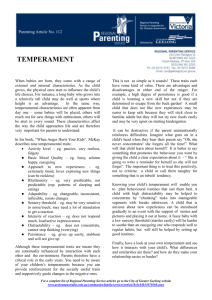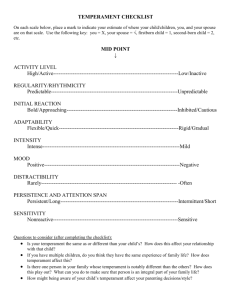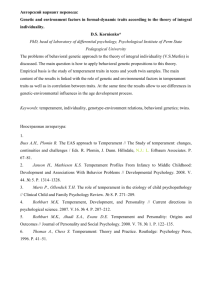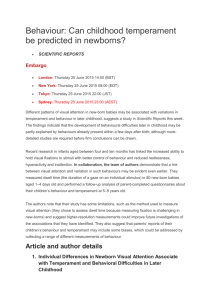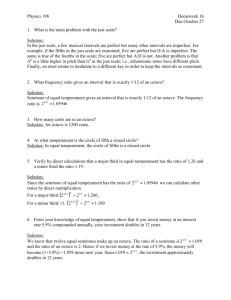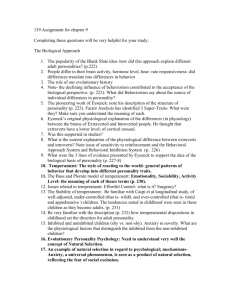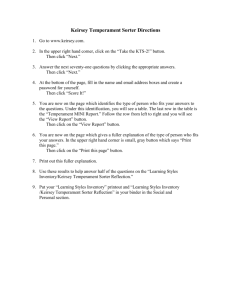Collaborators:
advertisement
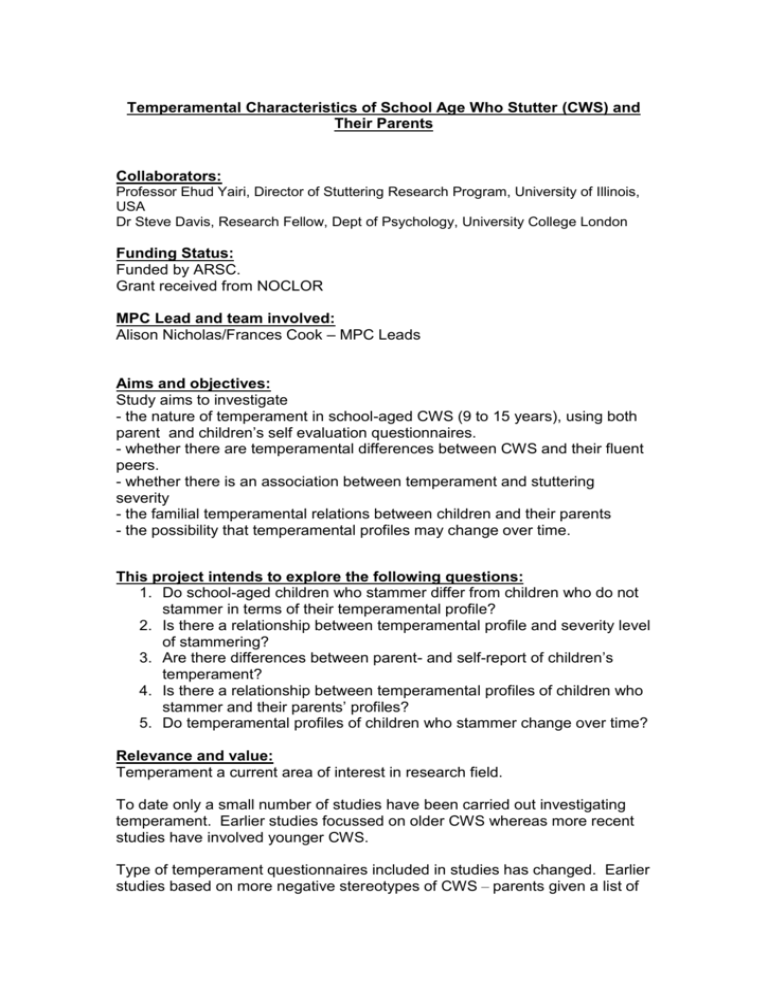
Temperamental Characteristics of School Age Who Stutter (CWS) and Their Parents Collaborators: Professor Ehud Yairi, Director of Stuttering Research Program, University of Illinois, USA Dr Steve Davis, Research Fellow, Dept of Psychology, University College London Funding Status: Funded by ARSC. Grant received from NOCLOR MPC Lead and team involved: Alison Nicholas/Frances Cook – MPC Leads Aims and objectives: Study aims to investigate - the nature of temperament in school-aged CWS (9 to 15 years), using both parent and children’s self evaluation questionnaires. - whether there are temperamental differences between CWS and their fluent peers. - whether there is an association between temperament and stuttering severity - the familial temperamental relations between children and their parents - the possibility that temperamental profiles may change over time. This project intends to explore the following questions: 1. Do school-aged children who stammer differ from children who do not stammer in terms of their temperamental profile? 2. Is there a relationship between temperamental profile and severity level of stammering? 3. Are there differences between parent- and self-report of children’s temperament? 4. Is there a relationship between temperamental profiles of children who stammer and their parents’ profiles? 5. Do temperamental profiles of children who stammer change over time? Relevance and value: Temperament a current area of interest in research field. To date only a small number of studies have been carried out investigating temperament. Earlier studies focussed on older CWS whereas more recent studies have involved younger CWS. Type of temperament questionnaires included in studies has changed. Earlier studies based on more negative stereotypes of CWS – parents given a list of adjectives or traits and asked to rate their child. More recent studies have used questionnaires where respondents asked to rate behaviours in specific situations rather than ask them to make global judgements about themselves or their child. No previous studies have sought to compare parent and child ratings of temperament. Past studies have not compared temperamental characteristics of parents and children or explored how temperament of CWS changes over time. Method: Participants Children who stammer All children and their parents attending a consultation who met the following criteria were invited to participate: aged 9-15 years (9;0-14;11); sufficient English language and literacy levels to complete the temperament questionnaires; no learning difficulties or syndromes identified; diagnosed as exhibiting a stammering problem by two speech and language therapists. 42 CWS have been recruited (32 male, 10 female) Children who do not stammer Participants were recruited from a variety of sources including a) local schools, b) personal contacts of MPC staff c) and parents of the CWS recruited a CWNS. The CWNS were: aged: 9-15 years; no concern had been expressed about their fluency by parents and/or teachers; sufficient English language and literacy levels to complete the temperament questionnaires; no learning difficulties or syndromes identified. 38 CWNS have been recruited ( Children completed one questionnaire rating their own temperament. Parents completed two questionnaires – one rating their child’s temperament and one rating their own temperament. Temperament questionnaires have been completed by parents and children at two points in time: at the beginning of the study, and 6 months later. Measures: 1. The Early Adolescent Temperament Questionnaire – Revised (EATQ-R) (Ellis and Rothbart, 2001) designed to assess temperament in children aged 9-15 years of age. Available in self- and parent-report formats. Assesses the following dimensions of temperament: activation control, affiliation, attention, fear, frustration, surgency/high intensity pleasure, inhibitory control, perceptual sensitivity, pleasure sensitivity and shyness. Takes approximately 15-20 minutes to complete. Child and parent presented with a range of statements which they have to rate according to how true or false they rate each statement, using a 5-point scale, with 1 indicating that the statement is “almost always untrue” and 5 indicating, “almost always true”. 2. Multidimensional Personality Questionnaire (MPQ, Tellegen, 1982) designed to reveal individual differences in personality and behavioural tendencies within a normal population. It consists of 300 statements, which parents will be asked to rate as either true or false. Typically takes approximately 45 minutes to complete.
